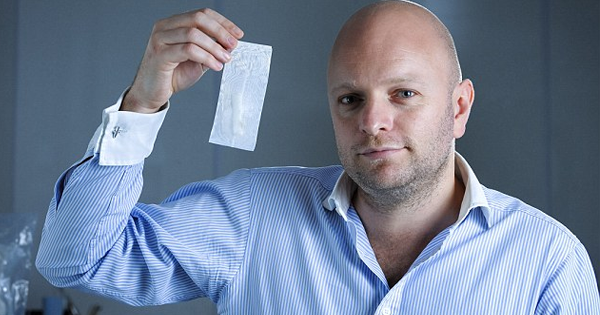Advertisement
Chronic wounds are a real problem. Hundreds of thousands of people are affected by them every year, and they’re tough to deal with.
A chronic wound is a wound that takes more than six weeks to heal. These can include foot and leg ulcers, or bed sores.
Often, these wounds become chronic because the circulation to the area is poor. This slows the healing process, and can lead to infection if untreated.
Healing normally starts with a blood clot, made up of red blood cells. Then, white blood cells come in and kill off infection. Then, protein strengthens new tissue, and new skin forms to heal the wound.
But with a chronic wound, the wound is full of dead tissue. This tissue needs to be removed, otherwise it impedes the healing process.
“A chronic wound will have a mixture of scar tissue and slough,” says Dr. Michael Gaunt, a surgeon at the Spire Lea Hospital in Cambridge, “which can impair healing, so we need to debride (clean) chronic wounds before healing can happen.”
There are many types of different methods of removing dead tissue, but many are dangerous. One of the most popular, least dangerous ones will also make many patients’ stomach churn: larval therapy.
This is a treatment used since WWI, when surgeons realized that when a soldier’s wound was infected with maggots, it actually healed faster. Now, applying maggots to a chronic wound is common practice.
The trick is that maggots only target dead or infected tissue. They’ll basically eat away at infected or dead tissue until they’re removed by doctors, before they start developing into flies.
And though it sounds disgusting, it’s actually highly effective. They can’t be felt since they’re so small, and are often applied to areas that are without feeling.
Now, they’re being applied using “Biobags,” wet bandages that serve the same purpose of applying maggots freely to a wound, but without the squeamishness that comes with handling them.
With the bags, the can be applied like a bandage, with no need to touch the individual maggots. There’s also no risk of losing them, which is comforting to many patients. And there are still all the advantages of larval therapy.
“Patients don’t always like having free larvae on their legs, and it can be a long process because we have to physically count each maggot going in and out to ensure none have gone AWOL,” says Dr. Gaunt. “Bagged maggots cannot go missing and it will make larval therapy more acceptable to patients and more controllable.”




